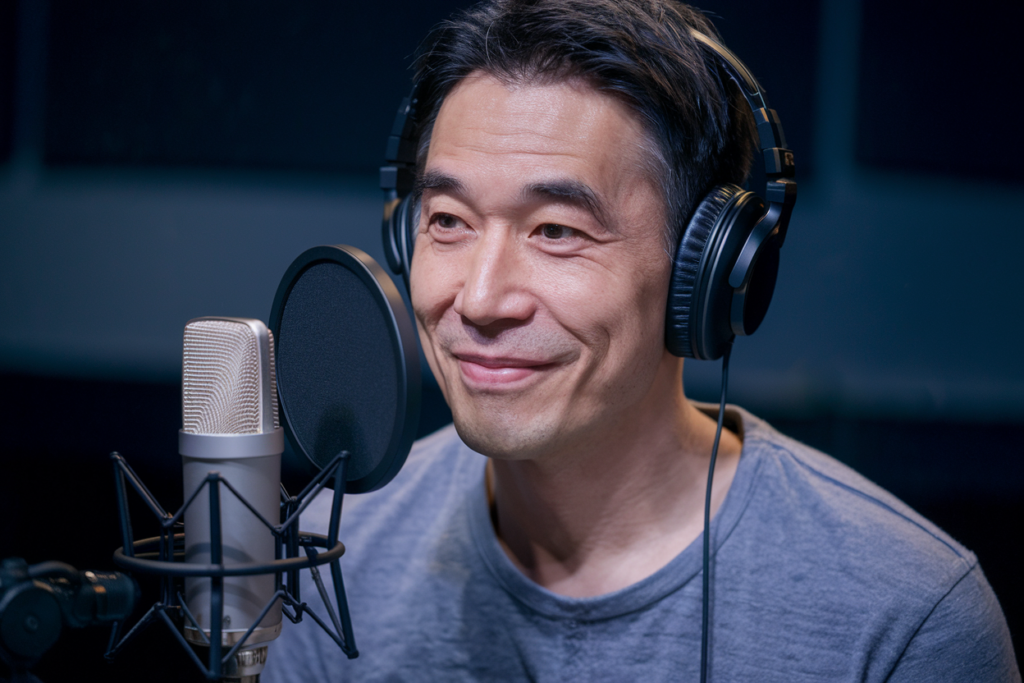Key Takeaways
- Distinctive Features: The Tohoku dialect, or “Tohoku-ben,” differs from standard Japanese through unique pronunciation, vocabulary, and grammar structures that reflect regional culture.
- Phonetic Variations: Pronunciation in Tohoku dialect often includes elongated vowels and softer consonant sounds, resulting in a melodic quality and distinct intonation patterns during conversations.
- Unique Vocabulary: Tohoku-ben incorporates specific terms related to local customs and cuisine, such as “ずんだ” (zunda) for edamame paste and “おばんざい” (obanzai) for seasonal home-cooked meals.
- Grammatical Distinctions: Sentence structure and verb conjugations in Tohoku dialect display variations from standard forms, enhancing expressiveness and reflecting regional identity.
- Cultural Significance: The dialect serves as a marker of community identity in the Tohoku region while gaining representation in media to promote appreciation of Japan’s linguistic diversity.
Ever wondered why some Japanese speakers sound so different from what you hear in movies or on TV? The Tohoku dialect, with its unique twists and turns, sets itself apart from standard Japanese in fascinating ways. If you’re planning a trip to the Tohoku region or just curious about language diversity, understanding these differences can enhance your experience.
Overview of Tohoku Dialect
Tohoku dialect, known as “Tohoku-ben,” showcases a rich tapestry of linguistic features that set it apart from standard Japanese. This regional dialect encompasses the northeastern regions of Japan, including prefectures like Aomori, Akita, Iwate, Yamagata, and Miyagi.
Pronunciation in Tohoku dialect often varies significantly from standard Japanese. For instance, speakers may elongate vowels or alter consonant sounds. Unique intonations and rhythms give the Tohoku dialect its distinct voice quality. You might notice that words sound softer or more melodic compared to their standard counterparts.
Vocabulary also plays a vital role in defining Tohoku dialect. Many terms are unique to the area and reflect local culture and traditions. Some expressions might seem unfamiliar if you’re used to standard Japanese; they often convey nuances tied specifically to life in Tohoku.
Grammar structures can differ as well. In some cases, verb endings change or auxiliary verbs vary from what you’d typically encounter in standard forms. These grammatical shifts contribute to the overall flavor of conversations in this region.
Understanding these characteristics enhances your experience when interacting with locals or exploring media featuring Tohoku-bens’ vibrant culture—think films or TV shows showcasing authentic interactions among residents.
In sum, appreciating the nuances within the Tohoku dialect not only deepens your understanding of regional identities but also enriches your appreciation for Japan’s diverse linguistic landscape.
Historical Context
To understand the Tohoku dialect, it’s essential to explore its historical roots and how it evolved over time. The Tohoku region has a rich history shaped by various influences, contributing to the distinctiveness of Tohoku-ben.
Development of Tohoku Dialect
The development of the Tohoku dialect reflects regional isolation and diverse cultural interactions. Following the Edo period, when Japan was closed off from foreign influence, local communities in Tohoku maintained unique linguistic traits. As transportation improved in the Meiji era, increased mobility allowed for more interaction with other regions while still preserving local vernaculars. This blend created a dialect that remains vibrant today.
Influences on Language Variations
Several factors influenced language variations within the Tohoku dialect. Geographical features played a crucial role; mountainous terrain often isolated communities, leading to distinct linguistic developments. Additionally, agricultural practices and local traditions contributed specialized vocabulary unique to this area. Cultural exchanges with neighboring regions also infused new terms and expressions into Tohoku-ben, enriching its lexicon further.
Understanding these historical contexts enhances appreciation for how deeply rooted culture shapes language in the Tohoku region.
Phonetic Differences
Tohoku dialect features several distinct phonetic differences when compared to standard Japanese. These variations contribute to its unique sound and character, making it a fascinating subject for linguists and enthusiasts alike.
Pronunciation Variations
Pronunciation in Tohoku-ben often involves elongating vowels, which creates a more melodic quality. For instance, the standard Japanese word “sukiyaki” may be pronounced with extended vowel sounds, resulting in something closer to “suki—yaki.” Consonant sounds also undergo changes; you might hear softer pronunciations of certain consonants that can alter the overall tone of words. This phonetic shift not only distinguishes Tohoku dialect but also reflects regional identity.
Intonation and Rhythm
Intonation patterns in Tohoku dialect differ significantly from those in standard Japanese. The rhythm often appears slower and more deliberate, giving conversations a distinct flow. While standard Japanese typically emphasizes high-low pitch variations within sentences, Tohoku-ben uses flatter intonation patterns that convey emotion through different means. This rhythmic aspect contributes to the warmth and expressiveness of the dialect, inviting listeners into a uniquely local experience.
Understanding these phonetic differences enriches your appreciation for Tohoku dialect’s beauty while highlighting how language evolves based on cultural influences and geographical factors.
Lexical Differences
Tohoku dialect features distinct lexical differences from standard Japanese. These variations enrich communication within the region and reflect local culture.
Unique Vocabulary
Unique vocabulary in Tohoku-ben includes terms specific to regional customs, food, and natural phenomena. For example, “ずんだ” (zunda) refers to a sweet paste made from edamame, commonly enjoyed as a dessert. Another term, “おばんざい” (obanzai), describes a style of cooking that emphasizes seasonal ingredients and home-cooked meals. Such words not only showcase Tohoku’s culinary heritage but also create a connection between speakers and their environment.
Common Expressions
Common expressions in Tohoku dialect often differ significantly from standard Japanese phrases. Phrases like “あんた” (anta) for “you” convey familiarity or affection among friends and family. Additionally, the expression “やっちゃった” (yacchatta) indicates regret for an action taken—much like saying “I messed up.” These expressions foster a sense of community while enriching everyday conversations with cultural nuances unique to the region.
Understanding these lexical differences enhances your appreciation for Tohoku dialect’s depth and vibrancy, revealing how language embodies the rich tapestry of local life.
Grammatical Distinctions
Tohoku dialect exhibits unique grammatical distinctions that set it apart from standard Japanese. These differences reflect the region’s cultural identity and historical context.
Sentence Structure Variations
Tohoku dialect often employs variations in sentence structure compared to standard Japanese. For instance, speakers may omit particles or use different word orders for emphasis. In standard Japanese, one might say “彼は行く” (kare wa iku – “He goes”), while in Tohoku-ben, it could become “あんた、行くっちゃ?” (anta, ikuccha? – “You’re going, right?”) This variation adds a sense of intimacy and directness to conversations.
Verb Conjugations
Verb conjugations in Tohoku dialect also differ significantly from standard forms. While the basic structure remains similar, certain verbs take on alternative endings that can indicate nuances in meaning or emotional tone. For example, instead of using the polite form “です” (desu), you might hear “だべ” (dabe) as a more casual affirmation among friends. Such changes enhance expressiveness and convey regional character.
Understanding these grammatical distinctions enriches your appreciation for the Tohoku dialect and its cultural depth. Whether you’re exploring language or seeking authentic interaction with locals, recognizing these nuances fosters a stronger connection to this vibrant linguistic heritage.
Cultural Significance
Tohoku dialect, or “Tohoku-ben,” holds a significant place in the cultural landscape of Japan. This dialect not only reflects the region’s unique identity but also embodies its rich history and traditions.
Role in Regional Identity
Tohoku-ben serves as a vital marker of regional identity, fostering community bonds among speakers. Its distinct pronunciation and vocabulary create a sense of belonging that unites locals. When you hear someone speak Tohoku dialect, it evokes images of local festivals, traditional crafts, and culinary delights specific to the area. The use of unique expressions strengthens social connections and reinforces cultural pride among residents.
Representation in Media
In recent years, Tohoku dialect has gained more visibility through various media platforms. TV shows and films often incorporate Tohoku-ben to provide authenticity to characters from the region. Voice actors skilled in this dialect bring stories to life by capturing its melodic intonations and distinctive phrases. Such representation enriches viewers’ understanding of Japan’s diverse linguistic landscape while promoting appreciation for regional cultures outside major urban centers like Tokyo. By showcasing Tohoku dialect authentically, creators help preserve this invaluable aspect of Japanese heritage for future generations.
Conclusion
Tohoku dialect offers a fascinating glimpse into Japan’s rich linguistic diversity. Its unique characteristics in pronunciation vocabulary and grammar not only set it apart from standard Japanese but also reflect the region’s cultural heritage. By embracing Tohoku-ben you’re connecting with a deeper understanding of local traditions and community bonds.
As you explore this vibrant dialect through conversations or media representations you’ll gain insights into the everyday lives of Tohoku residents. This appreciation for regional language fosters respect for Japan’s diverse cultural landscape and highlights how language evolves alongside its people. Engaging with Tohoku dialect enriches your experience whether you’re visiting the region or simply learning about its extraordinary history and identity.
Frequently Asked Questions
What is Tohoku dialect (Tohoku-ben)?
Tohoku dialect, or Tohoku-ben, is a distinct form of Japanese spoken in the Tohoku region. It features unique pronunciation, vocabulary, and grammatical structures that differentiate it from standard Japanese used in media.
How does Tohoku dialect differ from standard Japanese?
Tohoku-ben differs primarily in its pronunciation, which often includes elongated vowels and softer consonants. Additionally, it has unique vocabulary and grammatical variations that reflect local culture and traditions.
What are some examples of unique vocabulary in Tohoku dialect?
Examples include “ずんだ” (zunda), a sweet paste made from edamame, and “おばんざい” (obanzai), a style of cooking emphasizing seasonal ingredients. These terms highlight Tohoku’s rich culinary heritage.
Why is understanding the historical context important for Tohoku dialect?
Recognizing the historical context helps appreciate how regional isolation and cultural interactions shaped Tohoku-ben over time. This background enriches our understanding of its uniqueness within Japan’s linguistic landscape.
How does phonetics contribute to the beauty of Tohoku dialect?
Phonetic aspects such as elongated vowels and slower intonation patterns create a melodic quality that reflects regional identity, enhancing appreciation for the lyrical nature of Tohoku-ben.
What role does grammar play in distinguishing Tohoku dialect?
Grammatical differences include variations in sentence structure and verb conjugations. For instance, omitting particles or using alternative endings adds intimacy to conversations while conveying emotional tones specific to the region.
How has media representation influenced the perception of Tohoku dialect?
Media representation has brought visibility to Tohoku-ben by incorporating it into TV shows and films. This authenticity not only enhances viewers’ understanding but also fosters pride in regional cultures among residents.
Why is community significant for speakers of Tohoku dialect?
Community bonds are strengthened through shared language traits like pronunciation and vocabulary. Speaking Tohoku-ben fosters a sense of belonging among residents while celebrating their cultural identity.







